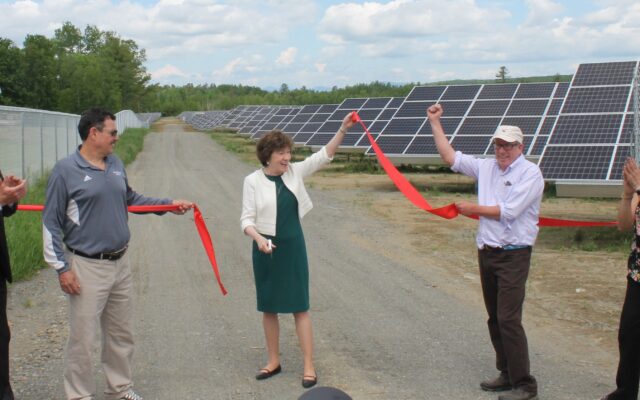
Solar projects ask to connect to grid
By Judy Harrison, Bangor Daily News Staff
The Bangor region is seeing a flood of proposals for new solar arrays.
Developers proposing 78 new solar projects in Penobscot County have submitted requests to connect to the grid since Gov. Janet Mills signed an expansion of the state’s net energy billing program into law in 2019, according to the two Maine electric utilities. Statewide, about two-thirds of the state’s solar capacity has been installed since the 2019 law change expanding the incentives, according to the Solar Energy Industries Association.
However, it’s unlikely all of the proposed projects will be built as developers finalize details and financing, and the projects inch through local and state approval processes. In addition, a new law that takes effect later this year aims to stem the proliferation of new solar projects amid concerns that they could raise electricity distribution costs. So far, the Maine Public Utilities Commission has approved just one of the projects, an installation slated to be built on 140 acres on Route 178 in Eddington.
“There’s an embarrassment of riches when it comes to solar in Maine,” said Bob Cleaves, co-founder of Dirigo Solar in Portland, which is the company behind the Eddington project.
All of the projects proposed for Penobscot County fall into the two- to five-megawatt category, which are considered small to medium solar arrays. The flood of applicants stems from the expanded state incentives that compensate producers for the electricity they supply to the grid and reduced costs of installing solar panels, Cleaves said.
“Efficiency has increased, the technology is better and we get more power from a smaller footprint of land,” he said.
Dirigo Solar has four solar arrays that are operational, including one that recently went online in Milo, and four that are under construction. The firm alone has invested $130 million in the state and is working on 40 potential projects, Cleaves said.
It is unlikely that all of the solar projects proposed in Penobscot County will come to fruition. Of the 13 projects in Bangor that have asked for a connection with Versant Power, the city has so far approved four applications, according to City Planning Officer Anne Krieg. None of them is up and running.
Across the river in Brewer, six potential projects have asked to connect with Versant but just two applications have been submitted and approved, according to City Planner Linda Johns.
Four projects in Hampden have asked to connect to the grid, according to Versant.
Municipalities in Penobscot County also are exploring powering municipal buildings and schools with solar power. Bangor, with a population of about 32,000, is looking at erecting an array on city-owned land on Maine Avenue. Bradford, with a population of fewer than 1,500 residents, has sought bids for a smaller-scale project.
Belfast, in Waldo County, has offset more than 90 percent of its municipal electrical costs with several solar arrays. City officials there have offered advice to other Maine communities on how to make the switch to solar power.
The pace of requests to connect to the grid may slow this fall when a new law takes effect that adds requirements before small and medium solar arrays can take advantage of net energy billing. Mills allowed the bill to become law without her signature.
Versant and Central Maine Power Co. officials have warned that transmission rates could skyrocket if all of the proposed solar arrays come online.
Rep. Seth Berry, D-Bowdoinham, a solar power advocate who sponsored the bill on net metering in 2019 and the one on energy billing this year, said that he was pleased with the response from developers to solar power incentives.
“It’s been very successful,” he said. “It’s creating jobs, creating savings and reducing our carbon footprint. We really are getting the best bang for our buck.”